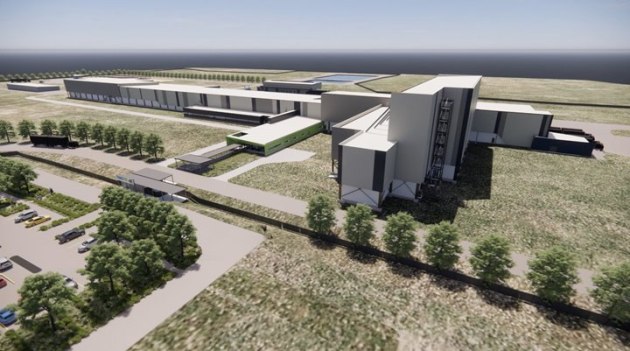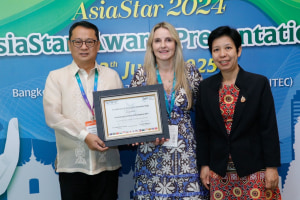This is a sneak preview of the article, which appears in our upcoming print edition of Food & Drink Business.
In this Food & Drink Business exclusive, Beca senior associate Business Development, Kim Featherstone, outlines the big decisions that need to be made when considering a greefield project.
Before launching into a Greenfield project, it’s important to firstly establish why all other brownfield options have been exhausted. Greenfield projects have major hurdles including cost, time, and business interruption.
There must be a major driver for change agreed within the business, that has overridden all these challenges. This driver for change (quality, cost, or schedule) forms the cornerstone project objective and will heavily influence decision making down the greenfield path.
Once a greenfield direction has been established, a User Requirements Specification (URS) is a great place to start with what is desired from the new site. List each item and prioritise into “must have”, “nice to have” or “future aspiration”.
These upfront thoughts provide dividends in later decision making when inevitable constraints are applied. Below are some of the big decisions to navigate at the start to help make the grass truly greener!
Select site before masterplanning
The most critical part of firming up the scope and capital cost of the project is to have a selected site. Previous projects have shown us that theoretical masterplans have not translated easily to the selected site. Key areas that are impacted include:
- Latent conditions & assumptions – i.e., cut to fill, geotechnical, stormwater requirements;
- traffic management – i.e., the position, elevations of heavy vehicle access and flows; and
- operational flows of materials, product and people are all impacted by site geometry.
The procurement strategy of the land purchase, particularly for food and beverage has a major implication on the availability of land parcels. Specific requirements include:
- Access to major customers, suppliers, raw materials, and a skilled workforce;
- HV Power, high-capacity water, sewer, and natural gas; and
- clearances from heavy industry, residential etc.
With any site selection there are trade-offs. Clients need to understand the ratios of capital/time vs. operational cost factors that can be incurred over the next 50+ years such as customer freight, raw material, and staffing.
Land acquisition can take a considerable amount of time from approaching the market to contract execution, with some options requiring time to prepare the site before possession.
Once a site is selected, statutory planning kicks into gear, with technical assessments and issues such as levels of state significance to address. As the bureaucratic wheels start turning – often very slowly – interactions with federal, state, and local governments begin.
Getting services to site
While design and procurement processes are largely controlled by the client, bringing services to site is dependent on government or other service providers that are not directly accountable to the client. The quantity and quality of project design management required in this area cannot be underestimated.
Different options can vary greatly in time and cost to bring the required services to site. In some instances, this will drive major scope decisions about onsite or other means of supply, particularly regarding HV power and natural gas. Many sites look to avoid bringing natural gas to site altogether for sustainability or cost drivers. For example, one of Beca’s clients found the capital cost of a natural gas pipeline and the operational cost to deliver it made it completely unviable financially.
With many clients now incorporating some type of onsite behind the meter power generation, the connection with the grid and HV supply needs to be understood. The location can determine many factors both technically and commercially in terms of what can be sold back to the grid at what rate. Understanding the generation intent early helps provide the specific information required as part of the connection applications.
Sustainable future step change
Environmental Impact
Net Zero 2050 is now 26 years away, so if you’re giving greenfield the green light, now is the time to embed sustainability and resilience into all stages of your project.
At the outset, establish sustainability targets for the project. These may be a natural progression from your business targets and can include energy or water reduction targets, goals to use recycled materials, or targets to recycle all construction waste. These targets will set the culture and drive the sustainability activity for the duration of the project.
From a climate resilience perspective, understanding not only the risks within the site, but more broadly in terms of transport links and utilities will help inform the design and future operations.
Once the sustainability in design framework is in place, it can be incorporated into the procurement process, whereby contractors’ tenders are evaluated based on sustainability criteria. As an example, they may be evaluated on their use of recycled or low carbon materials, energy efficient designs, or methodology for managing construction waste.
Social Impact
Many food and beverage clients now recognise their impact on local communities far beyond just the economic employment provided. In many regional or rural towns the industry is the cornerstone employer, so design considerations might include shared community facilities, site tours, or even an architectural façade.
Many clients are also progressively taking on and implementing Reconciliation Action Plans (RAPs) to support and grow the future of First Nations peoples. Breaking ground on a new facility is a great opportunity to recognise the Traditional Owners of land into the site design. From day one, a site culture of recognition and respect can begin.
Make the most of digital
Digital assets refer to any data or information that is captured or created during the capital project. An ‘integrated’ digital asset refers to how connected the digital assets are (or could be in the future).
Start with the mindset that you’re creating ‘integrated digital assets’ alongside the creation of a physical asset. These digital assets have significant and separate value that will be realised during operational phases. They do so by enabling data-driven decision-making to improve efficiency, reduce costs, enhance safety and even more advanced functions such as predictive maintenance.
During your design phase, choose how much information to include in the piping and instrumentation diagrams (P&IDs) and the 3D design model. A team with a mandate wider than just creating the physical asset is more likely to invest a little more effort.
These ‘smarter’ digital deliverables can then be integrated together (perhaps using a digital twin) from day one or later when the business is ready. The richer and integrated information drastically improves a wide range of decision-making activities required during operations. All that learning that the designers develop can now be more readily transferred to the ultimate owners and operators of the site.
It is very efficient to create these digital assets during a greenfield project when the digital artifacts required for them are mostly being created to support the creation of the physical asset anyway.
The green in regulation
Greenfields are a once in a generation project for many businesses. Being spoilt for choice in an initial unconstrained opportunity takes diligence to work through into an achievable reality. With so many active concurrent workstreams across the entire business, it takes a truly cross functional approach and team to bring these beasts of a project to life.
About Beca
For more than a century, Beca has been working with clients across the Asia Pacific to make the incredible real. Today, it is one of the largest multi-disciplinary engineering firms specialising in a range of services, including a legacy supporting the food and beverage industry. We’ve grown our business to meet your needs, offering you the latest industry knowledge in sustainable and digital practices – delivering for SMEs to multinational organisations.







